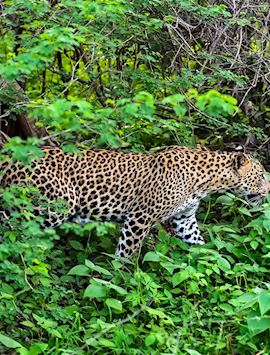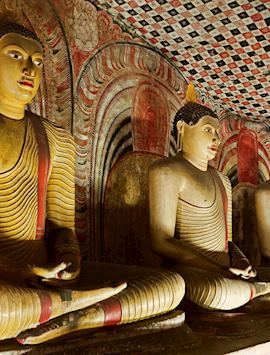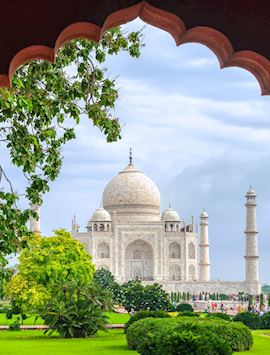By Sri Lanka & the Maldives specialist Alison
Sacred temple towns and tea plantations. Elephant sightings and jungle spas. Butter-soft beaches and crystal-clear waters teeming with turtles. A trip combining Sri Lanka and the Maldives is one that I love to recommend to visitors with two weeks or more to explore.
Why combine Sri Lanka and the Maldives?
With a 90-minute flight time and multiple daily connections between Sri Lanka and the Maldives, these two countries are natural travel companions. Not just this, but the beachside bliss of the Maldives is the perfect pairing to Sri Lanka’s vibrant cocktail of culture and adventure.
Its small size means you can explore much of Sri Lanka’s scenery and heritage, from temples to tea plantations, without too much traveling, before enjoying all-out relaxation on one of the 174 resort islands that make up the Indian Ocean archipelago. However, there’s more to the Maldives than simply soaking up the sun. You can learn to dive, surf, and cook local dishes, as well as discover constellations visible from both hemispheres and see coral reefs brimming with bright fish.
I recommend starting your trip in Sri Lanka, spending between 7-10 days here and then 5 days or more in the Maldives. Below you’ll find a few of my top trips combining the two.
1. Sri Lanka and the Maldives for food lovers

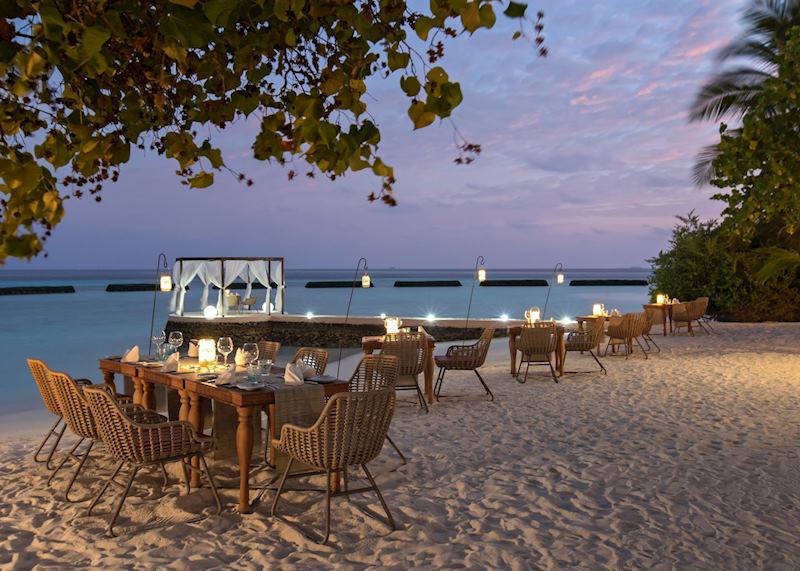
As you’d expect from islands hugged by the Indian Ocean, seafood plays a central role in the blended cuisine found here. Signature dishes like ambul thiyal (sour fish curry) and maalu oluwa (fish head curry) make use of not only freshly caught wild tuna, sailfish, prawns, lobster, and crab — but also local fruit, such as coconut and jackfruit, and an array of spices.
For an epicurean adventure, I suggest exploring Sri Lanka’s buzzy coastal capital Colombo and ancient mountain city Kandy before relaxing on a tea planation. We can arrange city food walking tours to take in historic sites and architecture, while also sampling signature dishes like paper dosa (Sri Lankan pancakes), hot butter cuttlefish, and Buffalo curd with palm syrup. You’ll eat where the locals eat, pausing to peer inside a Buddhist temple, or admire the Red Mosque hidden inside Colombo’s bustling Pettah Market.
The markets here are piled high with local fruit, and you might try mangosteen, king coconut — a wonderfully refreshing drink — or wood apples that smell like blue cheese and taste delicious when made into a sweet-and-sour juice.
It’s no secret that Sri Lanka produces some of the finest tea in the world, and I recommend a stay at the Rosyth Estate House in Kegalle to sample some for yourself. Perched on a hillside and surrounded by forest, just an hour’s drive from Kandy, this family-owned tea estate is restorative and food-focused. As well as dining on local dishes made from produce grown here, you’ll learn how to pluck, dry, and hand-roll your own black tea.
Over the Indian Ocean in the Maldives, you can feast on fresh seafood and world-class cuisine no matter where you stay. But for something more immersive, I recommend Constance Moofushi, an intimate overwater resort offering terrifically good food and wines straight from the cellar. As well as dining in creative ways — aboard a traditional sailing dhoni, or on a sandbank served by a private chef — you can try your hand at creative cocktail-making, learn to cook a Maldivian curry, or join a sommelier in the organic garden for biodynamic wine tasting.
2. Wildlife adventures in Sri Lanka and the Maldives


For such a small island, Sri Lanka’s abundant wildlife is remarkably diverse — and wherever you are, you’ll discover a birdwatching area (there are more than 70) or national park (there are around 25) close by.
Start in the north at Sri Lanka’s oldest and largest national park, Wilpattu — a quieter alternative to parks in the south and home to the world’s second-largest population of leopards. Here, the trees are taller, alive with the chatter of monkeys, and you’ll likely see water buffalo, mugger crocodile, spotting deer, and painted storks picking their way along the white sands of the park’s many lakes. If you’re lucky, you may even spy the elusive leopard and sloth bear.
You’ll then work your way down the country taking in wildlife as you go, from land monitors basking by the side of the roads, to monkeys like grey langurs and red loris swinging in trees.
As well as 34 endemic species including the purple-black tailed junglefowl, there are plenty of migrating birds — some from as far away as Siberia. Among the colorful characters, look out for the blue-tailed bee-eater with its electric blue-and-green feathers and curious black eye band, as well as the orange billed babbler, the dazzling white egret, and the hanging parrot — bright green with a stubby tail.
Gal Oya national park is a great place for birds, and elephants. Here, you can take a naturalist-led cruise around Sri Lanka’s largest man-made lake to discover flocks of ibises, grey herons, and oriental darters on bird island — and during wet season, herds of elephants swimming. We can arrange for you to get up close to calves during feedings at Udawalawe Elephant Transit Home, which rehabilitates orphans and readies them for release back into the wild.
If time allows, you may wish to journey south to coastal town Galle in search of blue and sperm whales, found most frequently between November and April. Or, head straight to the Maldives where the waters support more than 20 whale and dolphin species.
I recommend staying on lush Baros island, a former coconut plantation where everything is geared towards ocean biodiversity. Here, you can swim up to the resort’s world-class house reef straight from the sand or direct from your villa. The water is so clear, you’ll see confetti bursts of tropical fish nudging about your feet and maybe even spot turtles and nurse sharks feeding.
There are also eco-friendly adventures to have with the resident marine biologists. You might join a lesson on fish identification, or head out snorkeling at night for encounters with bioluminescent plankton, neon corals, and yellow moray eels.
3. Wellness in Sri Lanka and the Maldives
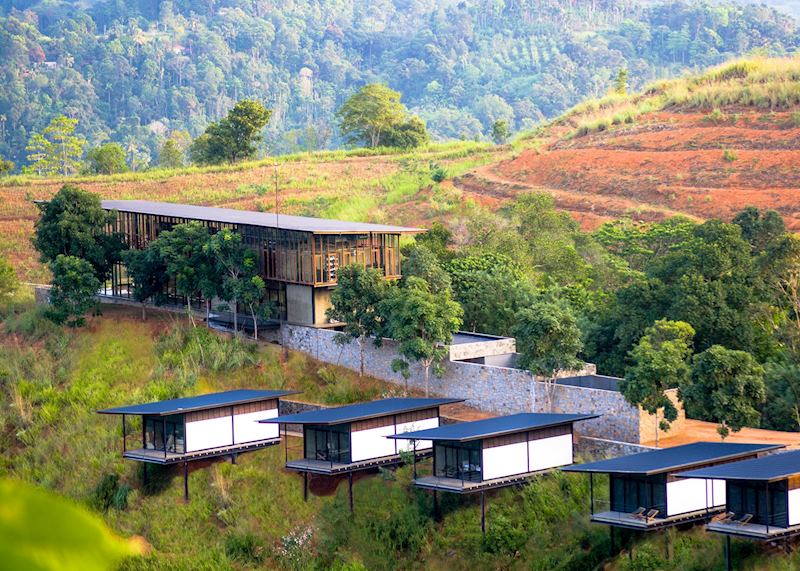
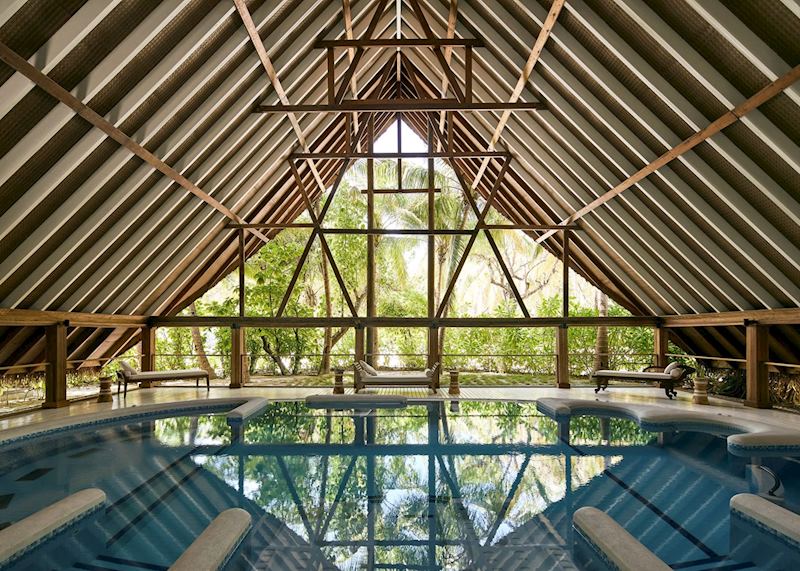
Sri Lanka and the Maldives have a way of bringing the modern spa into the wilderness, and in both destinations, you can immerse yourself in nature and focus on your wellbeing.
For a truly restorative retreat, I like Santani Wellness, an eco-friendly property set high in the Dumbara mountains where Ayurveda massage goes hand-in-hand with cookery lessons. It’s secluded but not far from the bustle of Kandy, and a stay here puts you in the heart of the jungle.
You can stretch out with Hatha yoga at sunrise, sink into an Abhyangam massage to the soundtrack of birdsong, or simply look out over the mountains from a glass-walled sauna or open-air thermal salt soak pool. There are plenty of beautiful spots to relax in, but also activities to enjoy. Join a local naturalist for guided mindfulness hikes, take a dip in a natural river pool, or learn to cook regional dishes using ingredients grown on the property’s farm.
Equally restorative, but with different views to admire, the Maldives is well-known for its luxury spas — but for a proper focus on wellness, I like COMO Cocoa Island. There’s a low-key luxury feel to the place thanks to its “less is more” philosophy, and you’ll discover this in the sandy-floored spa and overwater villas shaped like traditional dhoni fishing boats.
It's also home to a large wellness area with spa suites overlooking the lagoon and a rotating schedule of visiting practitioners. The approach here is holistic and tailored with treatments rooted in traditional Ayurvedic and Asian medicine.
Morning yoga classes are held at the pavilion, with sunrise views over the ocean. Follow a session up with a dip in one of the only hydrotherapy pools in the Maldives.
What I love most here is that there’s something for all wellbeing needs. You can use the sauna, steam room, and infinity pool, but also have your chakras healed, experience a Hindu water blessing, or practise barefoot walking meditation on a sandbank.
4. Cultural highlights of India and Sri Lanka & water sports in the Maldives


Combining two celebrated journeys — India’s Golden Triangle and Sri Lanka’s Cultural Triangle — this tour is geared towards immersion in each country’s history, culture, and traditions, before you enjoy water-based fun in the Maldives.
Starting in Delhi, you might choose a cycle rickshaw tour of Old Delhi where a private guide will whisk you through winding alleys to Jama Masjid, the largest mosque in India. Or, opt for a night walking tour around Chandni Chowk food market to sample street chai and sticky gulab jamun balls from the city’s oldest sweet shop.
Next, you’ll take a scenic train journey to Agra, where we can arrange a tour of the Taj Mahal at dawn, when the crowds are few and the palace glows a soft pink. Then, it’s onto Jaipur, where a private guide can introduce you to the Pink City’s artisans, whose traditional techniques are still used today. You might also wish to explore hillside Amber Fort with its mirrored walls and Mogul-style gardens, tour sprawling bazaars and street food stalls, or dine in a city palace.
You’ll board a flight to Colombo next, where a three-hour drive north puts you in the heart of Sri Lanka’s Cultural Triangle — a region defined by three ancient cities, two Buddhist kingdoms, and five UNESCO-listed sites.
From a dagoba (or stupa) second only in size to the pyramids in Giza to Dambulla Cave Temples (the best-preserved and largest cave monasteries in Sri Lanka), there is so much to see — and I suggest at least three days to do the area justice and a private guide to unpack its complex history.
Among must-see sites, fifth-century fortress Sigiriya Rock is one of the most exhilarating. Built by hand atop a gigantic 180 m (590 ft) granite rock, the citadel is reached by climbing more than 1,200 steps. A mirrored wall, caves painted with vivid frescoes, and green valley views from the top make the climb worthwhile — but for a bird’s eye view, we can arrange a hot-air balloon ride over the cultural sites.
Taking off from the shores of Kandalama Lake, it’s not only the best way to admire the ruins, but also spot various wildlife as you glide silently past lush forests, remote villages, and the Golden Buddha.
While the aerial view is magnificent, it’s essential to mingle with the warm Sri Lankan people, rightly proud of their heritage and culture. Swap balloon for bike on a Tuk-Tuk tour with a local guide and be welcomed into fishing families, get up-close with skilled artisans, and take part in traditional dance classes.
From Colombo, you’ll fly to Malé and take a seaplane to Dhigali Maldives. At around 45 minutes, the transfer to this larger island in the Raa Atoll takes a little longer than some, but the payoff comes in clear night skies and uninterrupted expanses of sea.
Whether on, over, or under the crystal-clear waters, action awaits at Dhigali. You can take in the panorama by parasail in the morning, before taking to the gently lapping waves by jet ski, kayak, or wakeboard — or paddleboard around the lagoon staring at shimmering parrotfish.
For bigger marine thrills, a glass-bottomed boat trip yields pods of dolphins, or you might choose to join a fishing expedition in search of sailfish.
Dhigali is surrounded by no fewer than 20 outstanding dive sites, and here you can see fusilier and jack fish, turtles, sharks, and stingrays — as well as some of the best manta ray sightings —almost year-round.
With recreation checked off, sink into the kind of ultra-relaxation only the Maldives can provide, from the deck of your overwater villa.
Read more about trips to Sri Lanka and the Maldives
Start thinking about your experience. These itineraries are simply suggestions for how you could enjoy some of the same experiences as our specialists. They're just for inspiration, because your trip will be created around your particular tastes.

